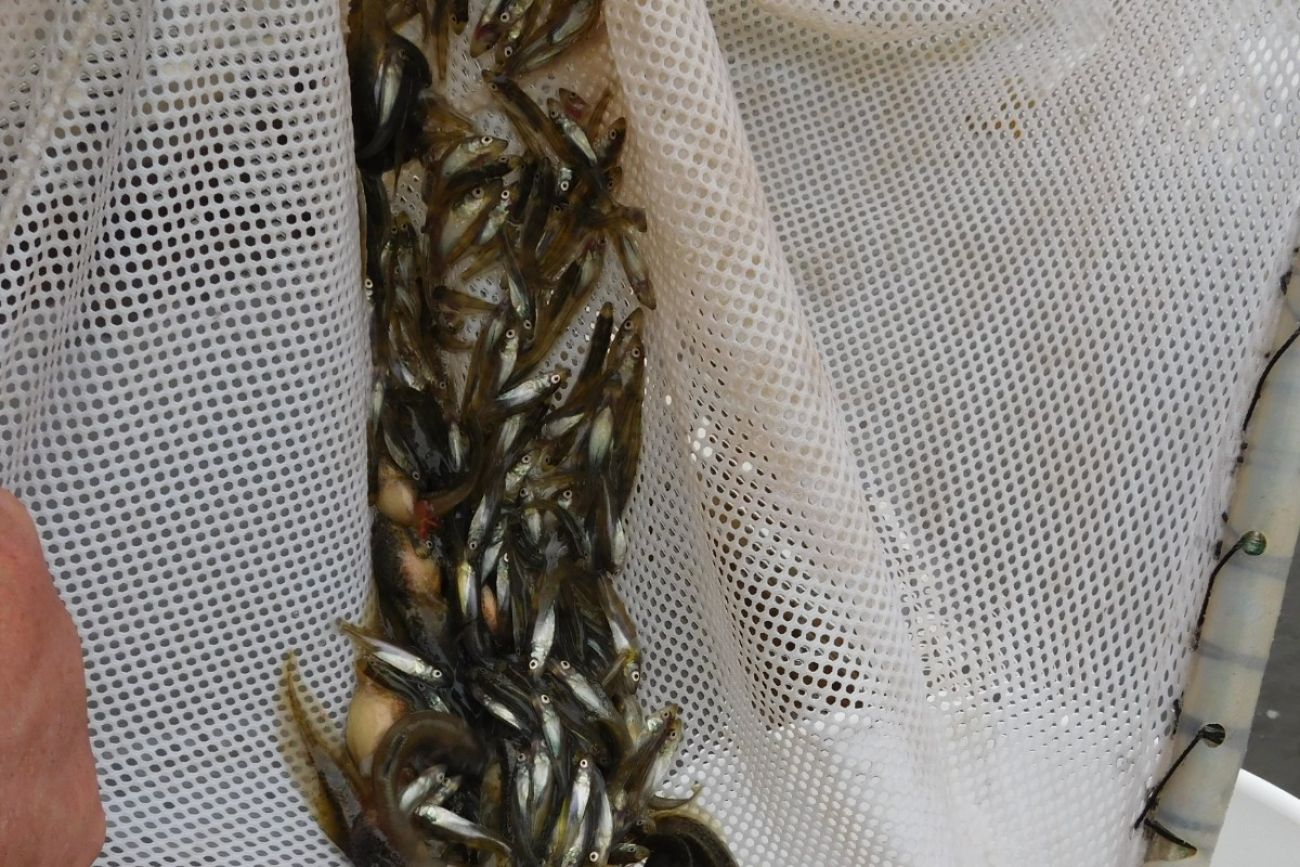Sault Tribe restocks U.P. waterways with walleye, whitefish

- The Sault Ste. Marie Tribe of Chippewa Indians released 1.1 million walleye and 45,421 whitefish fingerlings in Northern Waters last month
- The third annual release of whitefish was moved to the summer this year with the hope of continuing the population spawning
- Michigan relies on these fish for commercial fishing and dietary consumption purposes
Sault Tribe Chair Austin Lowes describes a story told by ancestors of the Sault Ste. Marie Tribe of Chippewa Indians: The whitefish were once “so bountiful in the St Mary's River Rapids that you could walk on their backs.”
Now, the fish are struggling to survive. This has left scientists predicting the species’ collapse.
But this month, over a million more walleye and whitefish swim through northern Michigan waters.
The Sault tribe transported and released more than 1.1 million walleye fingerlings into waters of the eastern Upper Peninsula and northern Lower Peninsula in early June, a slight drop from the 1.4 million released last year. A week later, Sault Tribe staff released 45,421 whitefish fingerlings from the Pine River’s mouth.
“Our people have relied on (fish) for quite some time,” Lowes told Bridge Michigan.
Related:
- Michigan DNR land auction includes waterfront property, $300 lot in Flint
- Hurricane Beryl aftermath: Michigan rainfall totals, flood damage
- How to protect pets during Michigan’s blue-green algae season
In 2023, the tribe was responsible for a third of the total walleye released in Michigan. Walleye are also released by Michigan researchers. The release efforts have generated an estimated $2.5 million for the commercial fishing industry and $2.14 million in sport fishing activity, according to a press release from the tribe.
Whitefish are also a backbone of the commercial fishing industry as they account for about 85% of the catch in Michigan.
Searching for a solution to the declining whitefish population, the tribe decided to release whitefish in the summer this year, and the most yet — a huge increase from last fall when only about 8,500 whitefish were released. The tribe has released whitefish for three years now.
Lowes attributes the species’ decline to zebra mussels, which eat the same prey as whitefish. This counters what he argues is “one of the lies that have been put out there: tribal fishermen are carpet bombing the Great Lakes,” Lowes said. “But as evidenced by our restocking efforts, that's not the case.”
Sault Tribe fisheries biologists collect eggs from adult fish and then fertilize and incubate the eggs until they hatch. Upon hatching, the fish are raised in ponds until they grow large enough to be released. This year, the walleye were transported to 10 different lakes, with 312,000 going to St. Martin’s River and 170,000 going to Potagannissing River.
Michigan Environment Watch
Michigan Environment Watch examines how public policy, industry, and other factors interact with the state’s trove of natural resources.
- See full coverage
- Subscribe
- Share tips and questions with Bridge environment reporter Kelly House
Michigan Environment Watch is made possible by generous financial support from:
Our generous Environment Watch underwriters encourage Bridge Michigan readers to also support civic journalism by becoming Bridge members. Please consider joining today.
See what new members are saying about why they donated to Bridge Michigan:
- “In order for this information to be accurate and unbiased it must be underwritten by its readers, not by special interests.” - Larry S.
- “Not many other media sources report on the topics Bridge does.” - Susan B.
- “Your journalism is outstanding and rare these days.” - Mark S.
If you want to ensure the future of nonpartisan, nonprofit Michigan journalism, please become a member today. You, too, will be asked why you donated and maybe we'll feature your quote next time!






